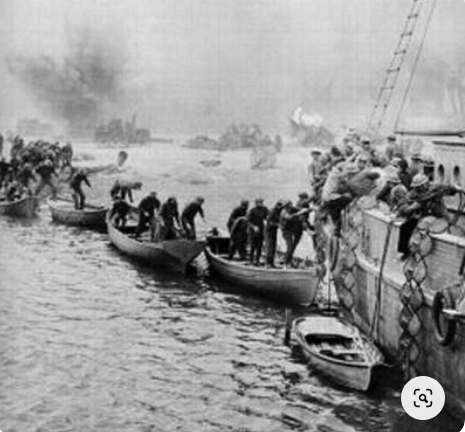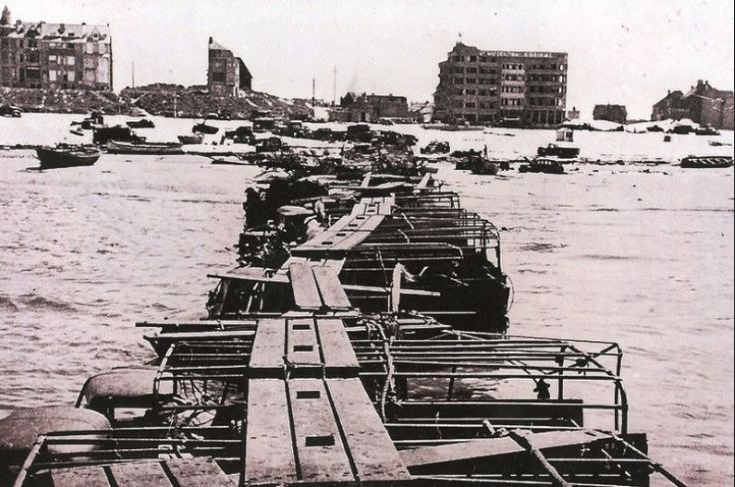In the six week Battle of France a large number of Belgian, British and French troops were cut off and surrounded by the German army. Fortunately on 23 May Hitler ordered the advance by the German army to halt as he believed that the Luftwaffe could destroy the remnants of the British Expeditionary Force (The BEF) on the Dunkirk beaches. The few days between then and the order being rescinded on 26 May gave the Allies time to improvise a defensive corridor and pull large numbers of troops back to Dunkirk.
The evacuation of 338,226 troops by a flotilla of 800 large and small ships from the beaches and harbour of Dunkirk took place 80 years ago between 26 May and 4 June 1940. It should be remembered that for every 7 men rescued one was left behind and the success of the evacuation was thanks partly to the sacrifices made by the rear guard and also the 51st Highland Infantry Division who, fighting alongside the French 10th Army at St-Valery-en-Coux kept some divisions of the German forces occupied until a few days after the evacuation.
Although the soldiers thought the RAF had deserted them as they could not see any British planes above the beaches many RAF pilots were further inland trying to prevent as many German planes as possible from reaching Dunkirk whilst others were fighting out at sea. The experience they gained in their Spitfires was a great help in the Battle of Britain later that year.
Bucquoy Road Cemetery, Ficheux, France is the burial ground for many of those killed during the German advance of May 1940 and this is where Private Joseph William Shallcross 7595331, Royal Army Ordnance Corps, was laid to rest He was only 19 when he died on 20 May 1940. He is remembered on the Weaverham Village Memorial in St Mary’s Churchyard where he is listed as W J Shallcross.




